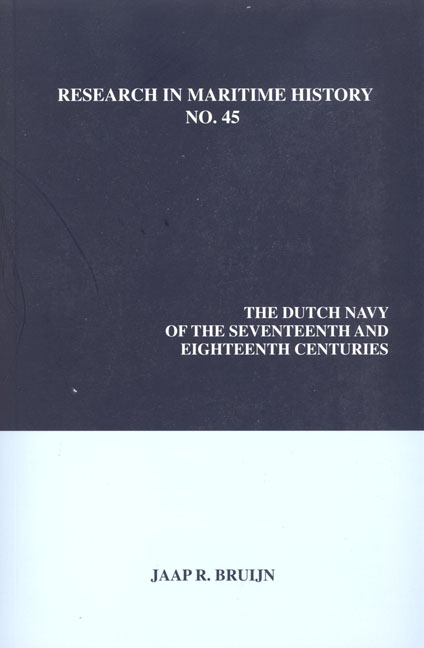Book contents
- Frontmatter
- Contents
- Illustrations
- Tables
- Series Editor's Foreword
- About the Author
- Introduction to the 2011 Edition
- Foreword
- Preface
- Introduction
- Map of the Dutch Republic
- Map of Dutch Naval Activity in European Waters
- Part One The “Old” Navy, Late 1500s-1652
- Part Two The “New” Navy, 1652-1713
- Part Three A Second-Rate Navy, 1714-1795
- In Retrospect
- Bibliography
- Index
Introduction to the 2011 Edition
- Frontmatter
- Contents
- Illustrations
- Tables
- Series Editor's Foreword
- About the Author
- Introduction to the 2011 Edition
- Foreword
- Preface
- Introduction
- Map of the Dutch Republic
- Map of Dutch Naval Activity in European Waters
- Part One The “Old” Navy, Late 1500s-1652
- Part Two The “New” Navy, 1652-1713
- Part Three A Second-Rate Navy, 1714-1795
- In Retrospect
- Bibliography
- Index
Summary
It is almost twenty years since I wrote the original preface and introduction to this book. In writing the volume I was stimulated immensely by my American colleague and friend, Clark G. Reynolds, who tragically died suddenly in 2005. Clark was an admirer of the Dutch Republic, in particular of its seventeenthcentury history. He lamented the fact that we lacked a modern study in English of the Dutch navy in that time period.
I gave the book a simple title to indicate its content. By the time I wrote it, naval history was no longer merely the history of great sea battles. The existing literature and debates inspired me to approach early modern Dutch naval history from four angles: operations, administration, officers and sailors. The more than 200-year time span was divided into three periods, each with a relevant heading: the “old” navy (late 1500s-1652), the “new” navy (1652-1713) and the “secondrate” navy (1714-1795). The book was written for readers who did not read Dutch but were interested in the story of a once glorious navy belonging to a small European country. It quickly sold out. Five years after the appearance of the English edition, the book was translated into Dutch, enlarged by about one-third with more details and examples, and took account of more recent literature and research. In essence, however, Varend Verleden remained the same book as the original English version. This volume sold out as well.
In this new introduction to the reprint of The Dutch Navy, I am pleased to have the opportunity to draw the reader's attention to many new books and articles published since 1993, a number of which are in English. These titles illustrate the present scope and quality of the study of Dutch naval and maritime history. The new literature not only provides more details but also additional background. As a result, it expands our knowledge exponentially. Today, for instance, more can be said about the navy and its organizational structure in the second half of the sixteenth century thanks to Louis Sicking's work, or about seamen's lives ashore and the migration of seafaring labour through publications by Annette de Wit and Ielle van Lottum.
- Type
- Chapter
- Information
- The Dutch Navy of the Seventeenth and Eighteenth Centuries , pp. xvii - xxiiPublisher: Liverpool University PressPrint publication year: 2011



